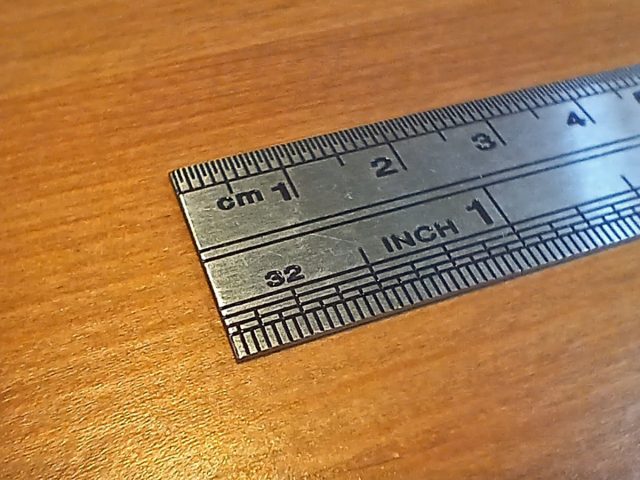Cheap As Chips
Everyone likes to spend less. FACT..! Whether you’re an individual budgeting for a household, or a business (large or small) trying to turn a profit, getting any potential savings to get ahead is a must. But few seem to be able to get their head around the concept of ‘Cheap vs Cost Effective’.
As individuals, we’re now in an age where cheap global imports have flooded whichever market the items are intended for. There are stores, such as Poundland, B&M & Home Bargains (or Dollar Tree in the US) that are a staple in many areas. We’re bombarded daily with advertisements for these items and the stores everywhere we look. Companies like Shien and Temu are constantly pushed under our noses on virtually every social media platform out there. And, with the prices of everything seemingly rising on a daily basis, there’s no wonder these kinds of outlets are so appealing.
But, What Of The Cost, Man..? THE COST..!?
As a small business owner, I know full well the financial pressures involved in keeping one afloat. But, I’ve also worked for more than a few companies and organisations (in the many decades I’ve been alive), and there was one phrase that cropped up time and time again, in various forms and guises, which was; “Is it cheap”..? This seems to be a phrase ingrained as an unofficial corporate mantra for all business owners, Managing Directors and CEOs, everywhere.
It appears that in their minds CHEAP = GOOD, without ever considering the long-term costs and implications. Now, I can imagine that quite a few reading this will be saying; surely, not having for fork out as much for anything (goods, services or otherwise) can only be a good thing, right..? Well, yes and no. Just because something is cheap, doesn’t necessarily mean that it’s the most cost effective option.
The Sam Vimes ‘Boots’ Theory of Socio-Economic Unfairness
The single, best example I’ve found to explain ‘Cheap vs Cost Effective’ is, not from any financial institution, online planning literature or from a business mogul, but from the mind of the late, great author; Sir Terry Pratchett. In his book Men At Arms (the 15th book in the absolutely brilliant Discworld series). The main protagonist of the book, Sam Vimes, propounds what he calls – The Sam Vimes ‘Boots’ Theory of Socio-Economic Unfairness. Which goes like this;
“The reason that the rich were so rich, Vimes reasoned, was because they managed to spend less money.
Take boots, for example. He [Vimes] earned thirty-eight dollars a month plus allowances. A really good pair of leather boots cost fifty dollars. But an affordable pair of boots, which were sort of OK for a season or two and then leaked like hell when the cardboard gave out, cost about ten dollars. Those were the kind of boots Vimes always bought, and wore until the soles were so thin that he could tell where he was in Ankh-Morpork on a foggy night by the feel of the cobbles.
But the thing was that good boots lasted for years and years. A man who could afford fifty dollars had a pair of boots that’d still be keeping his feet dry in ten years’ time, while the poor man who could only afford cheap boots would have spent a hundred dollars on boots in the same time and would still have wet feet.”

To read the full article this extract came from (as it does continue in humorous fashion), there is a link in the footnotes section below. But I do highly recommend reading the books.
Real World Example
Of course, the above is just part of a work of fiction, but I feel the economic commentary is still valid. Let me give you a real world example. I posses a pair of New Rock boots that I paid £210 (approx $336 USD) for, back in December 1999. Yes, the heels are showing signs of wear and the emblems have fallen off, but they’re in fantastic condition and are still part of my regular footwear rotation. I can’t even begin to quantify exactly how much I’ve spent on pairs of cheap work boots that I’ve had (and subsequently thrown away, due to them either wearing out or falling apart in a relatively short period) in the intervening years since I bought my New Rock boots. But it’s definitely more than £210. Now, if only New Rock made safety footwear.
Taking a step way from the footwear related examples (did you see what I did there..?), I recently had a need for a 20cm steel rule. It didn’t have to be a super expensive one (as the majority appear to be), so I opted for a Temu special. It only cost me approximately 70p (93¢ USD), or so, but when it arrived it was clearly apparent why it only cost 70p. The first millimeter, or so (1/32″), was missing!? Rendering it completely useless for taking measurements from internal corners!!

Cheap vs Cost Effective is not just a monetary thing, either. Time is money, as they say, so if purchasing a more expensive piece of equipment will save you time performing certain tasks, or last longer than the cheaper alternative, then that’s got to be worth it.
Business World Example
Back in the mid-2000s I worked as an IT Manager for a local family business. It was immediately apparent that the PC workstation they provided when I started, would quickly become under spec’d and impractical to use, as the role expanded. I expressed my concerns and suggested an upgrade. As the Operations Director had intimated some remote working may be required (and as I didn’t have a PC at home at that time), I suggested a laptop would be ideal. But, this was on the proviso that it wouldn’t be some cheap £200, 14″ Intel dual-core Celeron Dell (like all the sales reps had, which frequently had issues). It needed to be something that was fit for purpose, as I would be involved with creating a new website for the business and be responsible for taking and processing all images of the stock. The Operations Director asked me to price something up.
What I came back with was a spec for a £1200 hp workstation laptop, which had a mid-range (for 2006) quad-core, 64-bit AMD processor and was fitted with the maximum amount of RAM the motherboard could handle (I can’t remember what the capacity was, but it was peanuts by today’s standards). I didn’t go overboard with the spec, as I could have so easily done. But, what I came up with would make short work of the photo processing and be able to handle any future workload. I presented this back to the Operations Director, to which he said he’d have to okay this with the Managing Director.
An hour later the Operations Director came back to me and said that the Managing Director had asked why the business should pay £1200 for a laptop, when one of the £200 Dells would essentially do the same job. Without missing a beat I suggested the he go back to the Managing Director and ask him why the company paid £40k for his Range Rover company car, when a £3k Nissan Micra would essentially do the same job. He stared at me for a couple of seconds, then looked down at the specs in his hands. When he looked back up at me he said; I’ll sort it.
Cost Effective Is A State Of Mind
I know first hand how difficult it is to break out of the ‘cheap’ mindset, especially when you’ve nothing to begin with (which is a position I’ve found myself in, on more than one occasion). Being able to look past the cost of something, whether it’s a physical item or a provided service, and take a step back to look at other attributes, is an adjustment. It takes practice to not automatically jump at the cheapest option and consider whether a more expensive option would work out cheaper in the long run and/or save time.
My advice would be to take the time to do the research beforehand and weigh up both the financial and time costs and/or savings for each potential new purchase. The higher the value of the purchase, the more time should be taken to do the research.
Further Reading And Footnotes
The full article for the Sam Vimes ‘Boots’ Theory of Socio-Economic Unfairness can be found on the Terry Pratchett website.
For more information about me and all that is Silverhand Creative, go check out the About Me page on this website. I have a presence on Instagram and Facebook, where I post photos (and the odd video) of ongoing and finished projects. There’s also a YouTube channel, where you can see how I go about doing what I do and what tools I prefer to use. So, feel free (there’s no pressure) to follow and/or subscribe to any (or all) of the above.
I am most definitely amenable to commission work and have a web form for you to get in touch, should you be looking for something a little more custom.
All trademarks (registered or otherwise) used in this blog lie solely with their respective owners.

